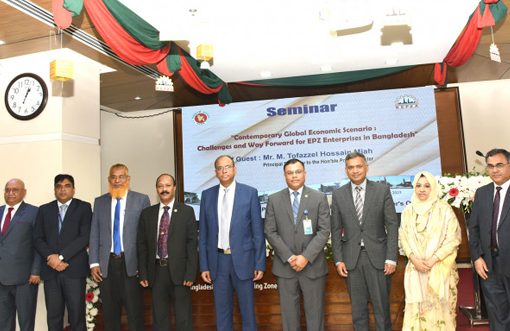The ministry is in favor of joining the China-led trade bloc RCEP

The Regional Comprehensive Economic Partnership (RCEP) is a free trade agreement among the Asia-Pacific nations of Australia, Brunei, Cambodia, China, Indonesia, Japan, South Korea, Laos, Malaysia, Myanmar, New Zealand, the Philippines, Singapore, Thailand, and Vietnam. The 15 member countries account for about 30% of the world’s population (2.3 billion people) and 30% of global GDP ($29.7 trillion), making it the largest trade bloc in history. Signed in November 2020, RCEP is the first free trade agreement among the largest economies in Asia, including China, Indonesia, Japan, and South Korea.
Dhaka has taken a decision in favor of Bangladesh’s inclusion in the Regional Comprehensive Economic Partnership (RCEP), the world’s largest commercial bloc led by China. This decision was taken in an inter-ministerial meeting held on Tuesday under the chairmanship of Mr. Tapan Kanti Ghosh, Senior Secretary of the Ministry of Commerce. This decision of the ministry will now be presented in the cabinet meeting.
Additional Secretary of the Ministry of Commerce (FTA) Noor Md. Mahbubul Haque told to media, “The inter-ministerial meeting has taken a policy decision in favor of Bangladesh’s accession to RCEP with some caveats.”
When asked, when the application will be made, he said that the agreement does not say anything about the inclusion process. “That means Bangladesh should make an application for inclusion in the RCEP, or follow a prescribed model, we have to inquire now,” he said.
The 15-nation commercial alliance RSEP started the journey mainly in January last year, after covid period. These 15 countries have a total population of 2.3 billion (30 percent of the world’s total population), a market size of $29 trillion.
According to the rules, from July 1st this year, other countries can also apply for inclusion in the RCEP. Sri Lanka and Hong Kong have already applied for inclusion in the bloc. Officials said that although RCEP is called a China-led trade bloc but close US allies like Japan, South Korea and Australia are also members of the alliance. Moreover, India can become a member of RCEP as a founding member at any time.
On the other hand, out of the countries with which Bangladesh is now negotiating to sign a free trade agreement, six countries are included in the RCEP. The feasibility study has revealed the possibility of increasing Bangladesh’s exports by 5 billion dollars if it joins this bloc.
RCEP countries have taken 10 to 25 years to reduce their tariffs. If Bangladesh applies for inclusion in RCEP, 15 countries included in RCEP will decide on it. In this case, Bangladesh has to negotiate separately with each country. Commerce Ministry officials said that most of the people present at the meeting were in favor of inclusion in RCEP. They said that through inclusion in the RCEP, the issue of connecting to the regional value chain has gained importance. In this case, the opinion has also been raised about the possibility of how much the export of Bangladesh can increase.
An official of the Ministry of Commerce said that Vietnam imports raw materials from China. Chinese investment in the country is also huge. Again, Vietnam’s exports to the countries included in the RCEP, including China, are also significant.
Professor Mostafizur Rahman said that if Bangladesh joins RCEP, the government’s income from customs duties will decrease during the import of goods from these countries. He further said, ‘Government should cover its losses by increasing exports. That is why foreign investment should be given importance. If the investment from the countries included in the RCEP increases in Bangladesh, the export will also increase. Export diversification will also be possible through this.’
Currently, 12 percent of Bangladesh’s exports go to South Asia, East Asia and ASEAN countries, he said.





Comment here